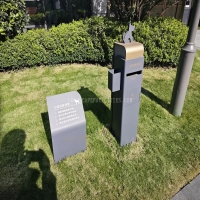Welcome to the website for landscape facilities products and knowledge.
What is the table’s resistance to fading from pool chemicals or chlorine?
When selecting furniture for poolside environments, one critical question arises: what is the table's resistance to fading from pool chemicals or chlorine? This concern is paramount for homeowners and commercial property managers seeking durable outdoor furnishings that maintain their aesthetic appeal despite constant exposure to harsh swimming pool environments.
Modern outdoor tables employ advanced material technologies to combat chemical-induced fading. High-quality polyethylene resin tables feature UV-inhibited pigments that penetrate deep into the material, providing color stability that withstands chlorine exposure. Powder-coated aluminum tables utilize sophisticated finishing systems where multiple protective layers create an impermeable barrier against chemical penetration.
The science behind fade resistance involves both material composition and protective treatments. Thermally modified woods undergo cellular structure changes that naturally resist chemical absorption, while stainless steel tables with electrostatically applied coatings prevent chlorine molecules from reaching vulnerable surfaces. The most effective tables incorporate molecular-level protection where additives within the material matrix neutralize chlorine's oxidizing effects before they can cause color degradation.
Environmental factors significantly influence fading resistance. Tables in saltwater pools face accelerated deterioration compared to freshwater environments, requiring specialized protective measures. Regional climate variations, including sunlight intensity and temperature fluctuations, further impact how pool chemicals interact with table surfaces. Manufacturers conduct accelerated weathering tests simulating years of chemical exposure within months to verify long-term color retention.
Maintenance practices dramatically affect fade resistance. Regular cleaning with pH-neutral solutions prevents chemical buildup that accelerates color loss, while immediate rinsing after chlorine spills minimizes prolonged exposure. Protective covers during pool shock treatments provide additional safeguarding against concentrated chemical contact.
Industry standards provide measurable fade resistance ratings. The American Society for Testing and Materials (ASTM) outlines specific protocols for evaluating colorfastness, with premium tables demonstrating less than 5% color change after 2,000 hours of accelerated weathering equivalent to approximately five years of typical poolside exposure. These standardized tests help consumers make informed decisions based on verified performance data rather than marketing claims.
Innovative solutions continue emerging in fade prevention technology. Nano-ceramic coatings now offer molecular-level protection, while integrated UV blockers within material substrates provide multi-directional defense. Some manufacturers incorporate self-healing coatings that microscopically repair minor chemical damage before it becomes visible fading.
Understanding these factors enables informed selection of poolside tables that will maintain their visual appeal despite continuous chemical exposure, ensuring your outdoor space remains beautiful for years without frequent replacement costs or noticeable color deterioration.
Related search:

Recommendation
Outdoor cat and dog feces trash can; Community pet trash can; Metal multi-color design